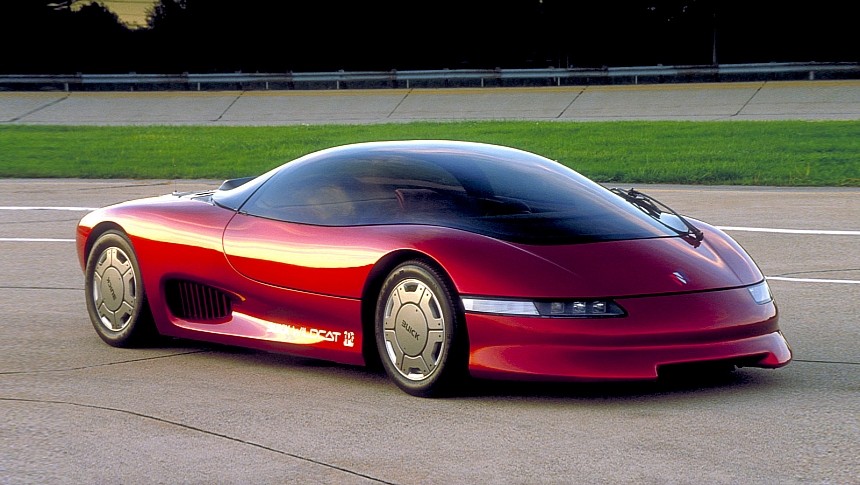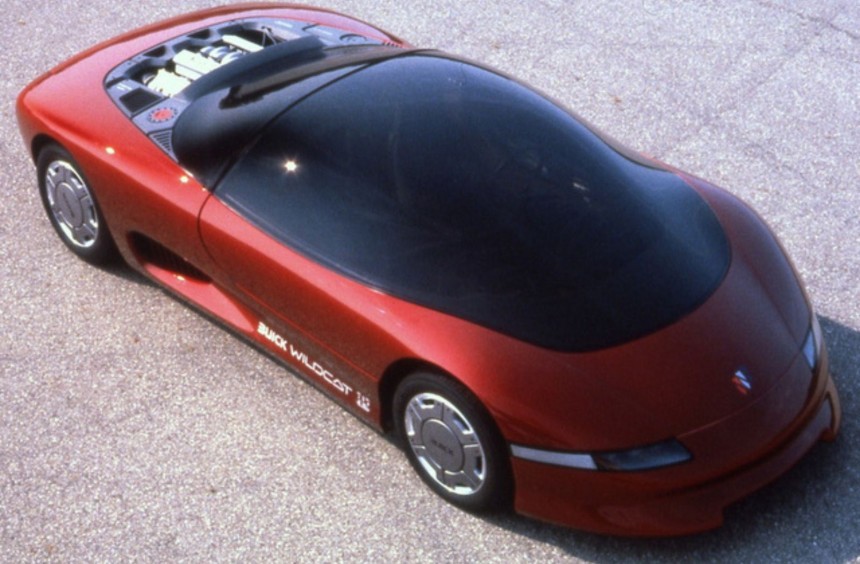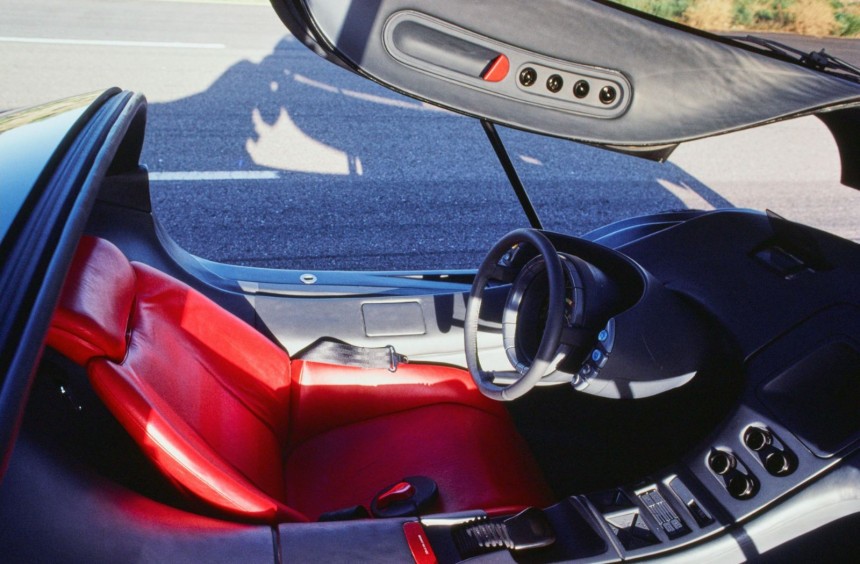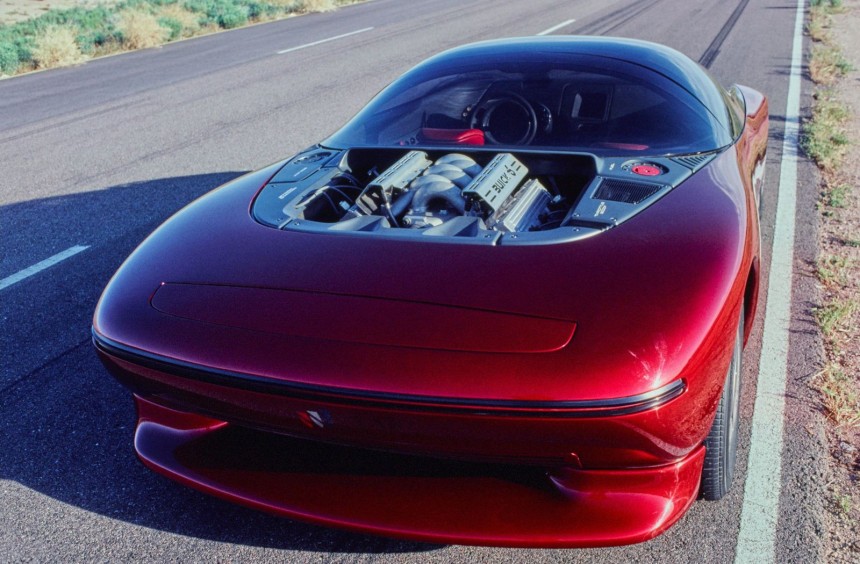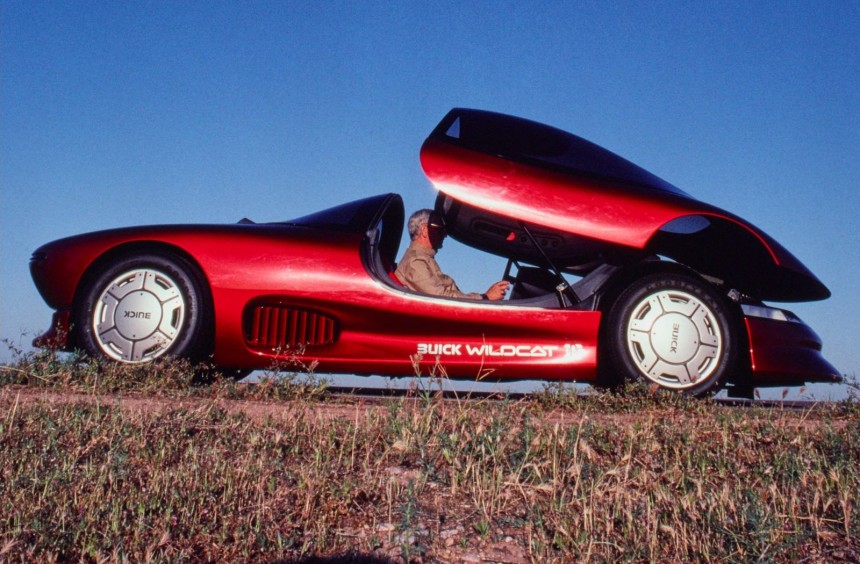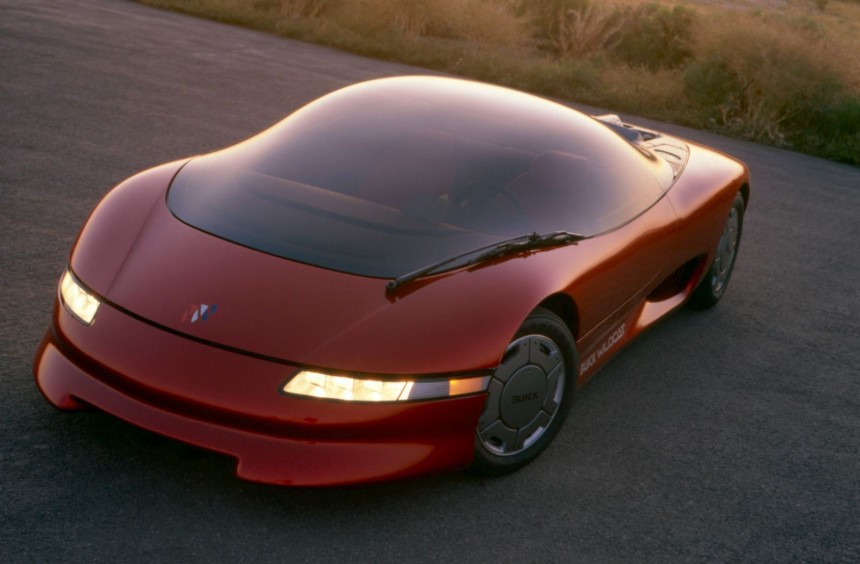With an unconventional design and futuristic tech, the 1985 Wildcat remains one of the most jaw-dropping concept cars to don Buick badges.
Still around today, thanks to its success in the Chinese market, the oldest surviving American carmaker is known worldwide for its luxury models.
To enthusiasts with a keen interest in concepts, Buick is also known for creating the 1939 Y-Job, which is considered the automotive industry's first concept car.
Apart from luxury models and exciting concepts, the General Motors division tried its luck in the muscle car market several times.
During the 1960s and early 1970s, it contributed to the golden age with the Gran Sport and GSX models, and in 1987, it proved that the Regal-bassed GNX could be called a muscle car even if it was powered by a V6.
But the legendary turbocharged engine beefed up to muscle-car-worthy performance levels with help from McLaren wasn't the first of its kind to power a Buick.
Two years before the GNX, another 3.8-liter V6 with McLaren's fingerprints all over it debuted in the 4WD Wildcat supercar.
Even the muscle cars mentioned above carried an upscale feel characteristic of the luxury brand.
However, at the 1985 SEMA show in Las Vegas, the home of uncharacteristic cars and full-blown extravagance, Buick surprised everyone with its take on the increasingly-popular supercar segment.
During those days, wedge-shaped legends like the Ferrari Testarossa or Lamborghini Countach LP500 S roamed the streets, but Buick's styling department went for a more futuristic look based on ample curves.
Designed by David P. Rand, the Wildcat started life as a full-scale clay model, and then the experts at PPG Industries built the chassis/body combo using an innovative carbon fiber and fiberglass composite.
The concept car's Indy car-inspired independent suspension system was mounted directly on the monocoque-style chassis integrated into the
the compact, low-slung body.
The chassis - with a 102-inch (2,591-mm) wheelbase - also featured a high-performance braking system with four-wheel power disc brakes and ABS.
The Wildcat featured a huge tinted Plexiglass canopy that swung open towards the front of the car, revealing a futuristic two-seat cockpit.
Designed by Nellie Toledo, the futuristic interior comprised two custom-built bucket seats wrapped in bright red leather and a host of high-tech features.
The most eye-catching of those features was the spokeless steering wheel inspired by the 1972 Maserati Boomerang concept, that tilted backwards when the canopy was opened.
At the center of the wheel, Buick engineers fitted a fixed digital cluster that displayed relevant information like engine rpm, water, and oil temperature, fuel level, or battery voltage.
Bordered by buttons that toggled various functions, the steering wheel hub cluster wasn't the Wildcat's only digital display.
Another one used to display a digital compass, g-force data, and oil pressure was integrated into the center console, while a head-up display mounted on the driver's side of the dash showed the car's speed and gear.
While the glass canopy made up half of the car when viewed from the front, the rear of the concept car drew attention to the V6 engine peaking out its decklid.
In 1978, GM revived the all-aluminum 231 of the early sixties and, with minor modifications, began marketing it as the new 3.8-liter V6.
Though it was available with modern tech like fuel injection and turbocharging, the V6 was still a 1960s OHV engine at heart.
For the Wildcat concept, Buick partnered with the UK-based company's American powerplant tuning division, McLaren Engines of Livonia, Michigan, and created a thoroughly upgraded version of the 3.8-liter.
Based on the stock block, the naturally aspirated six-cylinder received new heads with dual overhead cams, four valves per cylinder, and an electronic, sequential-port fuel injection system.
Since the Wildcat was meant to be fully functional and comply with federal emissions laws, its engine was restricted to 230 hp and 245 lb-ft of torque. However, it was rumored to be capable of making 360 hp and 398 lb-ft (540 Nm) of twist.
The V6 sent power to all four wheels via a modified THM 700-R4 four-speed automatic, a central transfer case, and two differentials on each axle.
To provide perfect balance, 35 % of the torque was diverted to the front wheels while the rest went to the rear.
According to Buick, even with 230 hp on tap, the 2,910-pound (1,320 kg) mid-engine concept car was capable of accelerating to 60 mph (97 kph) from a standstill in 4.5 seconds and could reach a top speed of 180 mph (290 kph).
Though not the fastest car in the world at the time of its release, those figures made the Wildcat a full second faster to 60 mph than the Countach LP500, while its top speed was only two mph (3.2 kph) lower than the 375-hp Lambo.
After making jaws drop at SEMA, the Wildcat appeared at several international auto shows, including the Salone dell'Automobile di Torino ( or Turin Auto Show).
In Italy, Buick's futuristic concept car was given the prestigious "Turino-Piemonte International Jury of the Car Design Award" for the best prototype of 1985.
Of course, the car never made it into production, nor did it influence any of Buick's future production models.
Still, it was retired by GM, and it can be admired by anyone who visits the corporation's Heritage Center, the 81,000-square-foot (75,25.15 square meters) museum in Sterling Heights, Michigan.
Though Buick has continued to thrill us with futuristic concepts, including the stunning GT-style Wildcat EV, the 1985 Wildcat is still one of the division's most extravagant show cars.
If you can't make it to Michigan to see the Wildcat in person, you can take a virtual tour in the YouTube video below by Tonys Car Parts.
To enthusiasts with a keen interest in concepts, Buick is also known for creating the 1939 Y-Job, which is considered the automotive industry's first concept car.
Apart from luxury models and exciting concepts, the General Motors division tried its luck in the muscle car market several times.
During the 1960s and early 1970s, it contributed to the golden age with the Gran Sport and GSX models, and in 1987, it proved that the Regal-bassed GNX could be called a muscle car even if it was powered by a V6.
But the legendary turbocharged engine beefed up to muscle-car-worthy performance levels with help from McLaren wasn't the first of its kind to power a Buick.
Two years before the GNX, another 3.8-liter V6 with McLaren's fingerprints all over it debuted in the 4WD Wildcat supercar.
The most uncharacteristic Buick of all time
However, at the 1985 SEMA show in Las Vegas, the home of uncharacteristic cars and full-blown extravagance, Buick surprised everyone with its take on the increasingly-popular supercar segment.
During those days, wedge-shaped legends like the Ferrari Testarossa or Lamborghini Countach LP500 S roamed the streets, but Buick's styling department went for a more futuristic look based on ample curves.
Designed by David P. Rand, the Wildcat started life as a full-scale clay model, and then the experts at PPG Industries built the chassis/body combo using an innovative carbon fiber and fiberglass composite.
The concept car's Indy car-inspired independent suspension system was mounted directly on the monocoque-style chassis integrated into the
the compact, low-slung body.
The chassis - with a 102-inch (2,591-mm) wheelbase - also featured a high-performance braking system with four-wheel power disc brakes and ABS.
An interior brimming with high-tech features
Designed by Nellie Toledo, the futuristic interior comprised two custom-built bucket seats wrapped in bright red leather and a host of high-tech features.
The most eye-catching of those features was the spokeless steering wheel inspired by the 1972 Maserati Boomerang concept, that tilted backwards when the canopy was opened.
At the center of the wheel, Buick engineers fitted a fixed digital cluster that displayed relevant information like engine rpm, water, and oil temperature, fuel level, or battery voltage.
Bordered by buttons that toggled various functions, the steering wheel hub cluster wasn't the Wildcat's only digital display.
Another one used to display a digital compass, g-force data, and oil pressure was integrated into the center console, while a head-up display mounted on the driver's side of the dash showed the car's speed and gear.
Infusing the venerable V6 with modern tech
In 1978, GM revived the all-aluminum 231 of the early sixties and, with minor modifications, began marketing it as the new 3.8-liter V6.
Though it was available with modern tech like fuel injection and turbocharging, the V6 was still a 1960s OHV engine at heart.
For the Wildcat concept, Buick partnered with the UK-based company's American powerplant tuning division, McLaren Engines of Livonia, Michigan, and created a thoroughly upgraded version of the 3.8-liter.
Based on the stock block, the naturally aspirated six-cylinder received new heads with dual overhead cams, four valves per cylinder, and an electronic, sequential-port fuel injection system.
Since the Wildcat was meant to be fully functional and comply with federal emissions laws, its engine was restricted to 230 hp and 245 lb-ft of torque. However, it was rumored to be capable of making 360 hp and 398 lb-ft (540 Nm) of twist.
Capable of generating performance figures worthy of a 1980s supercar
To provide perfect balance, 35 % of the torque was diverted to the front wheels while the rest went to the rear.
According to Buick, even with 230 hp on tap, the 2,910-pound (1,320 kg) mid-engine concept car was capable of accelerating to 60 mph (97 kph) from a standstill in 4.5 seconds and could reach a top speed of 180 mph (290 kph).
Though not the fastest car in the world at the time of its release, those figures made the Wildcat a full second faster to 60 mph than the Countach LP500, while its top speed was only two mph (3.2 kph) lower than the 375-hp Lambo.
An award-winning concept that's still around
In Italy, Buick's futuristic concept car was given the prestigious "Turino-Piemonte International Jury of the Car Design Award" for the best prototype of 1985.
Of course, the car never made it into production, nor did it influence any of Buick's future production models.
Still, it was retired by GM, and it can be admired by anyone who visits the corporation's Heritage Center, the 81,000-square-foot (75,25.15 square meters) museum in Sterling Heights, Michigan.
Though Buick has continued to thrill us with futuristic concepts, including the stunning GT-style Wildcat EV, the 1985 Wildcat is still one of the division's most extravagant show cars.
If you can't make it to Michigan to see the Wildcat in person, you can take a virtual tour in the YouTube video below by Tonys Car Parts.
